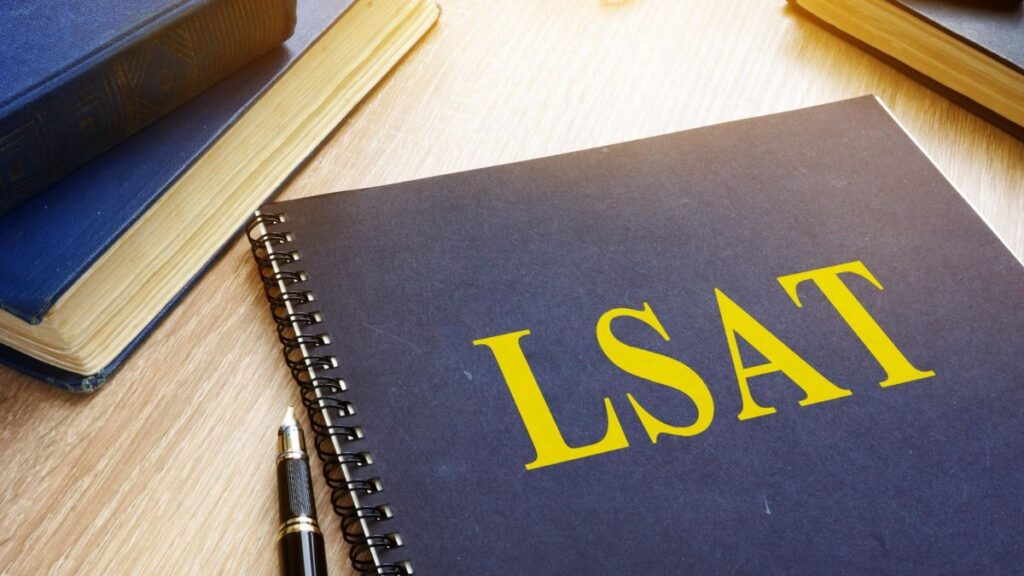Law School Admission Test, popularly known as LSAT, is an integral part of the law school admission process. It is conducted across 60 countries- US, Canada, and a growing number of other nations. LSAT plays a very significant role in determining the aspirant’s strengths as a law school applicant as it is supposedly the best predictor available on how a student will perform in the law school.

According to LSAC, the conducting authority, “LSAT is designed to measure skills that are considered essential for success in law schools.” LSAC has done a lot of research to back up the contention that LSAT successfully measures these skills and therefore, it is considered superior to GPAs.
On one hand, the difficulty of securing a certain GPA varies as it depends on which school an applicant went to and what program s/he studied there. LSAT, on the other hand, gives everyone equal opportunity by giving similar questions that don’t vary much in difficulty from test to test and year to year.
Higher LSAT score shows a strong correlation with student’s first year grade average in law school. Importance of LSAT score relative to other elements of overall application package varies a little from school to school. However, generally the LSAT score alone is thought to be anywhere from twice as important as GPA to four to five times as important!
LSAT not only determines the candidate’s potential but it is also a deciding factor when it comes to decisions regarding scholarships. It means that a great LSAT score will not only grant you admission to the top college, but also will gain you scholarship money.
For admission to the law schools in India, LSAT India is conducted by LSAC which grants admission to the top law institutes. LSAT India is no less when compared to LSAT as it is very similar to LSAT in content.
It is administered in 20 cities across India and is a standardized test designed by the US based Law School Admission Council (LSAC) for admissions to top law schools in India in various law programs — BA L.L.B, L.L.B. and L.L.M. LSAT (global or India).
The scores secured in LSAT India are accepted by more than 75 law institutes which includes top institutes such as Jindal Global Law School, Rajiv Gandhi School of Intellectual Property Law and KLE’s Society Law School, among others.
LSAT is designed to measure skills that are considered essential for success in law schools- the reading and comprehension of complex texts with accuracy and insight; the organization & management of information; the ability to think critically; and the analysis & evaluation of the reasoning.
Let’s examine some of the reasons why LSAT has gained popularity over the years and discuss its growth in the future.
LSAT: More than 98% colleges Accept It Globally
Top Law schools care a lot about LSAT scores — you have to have one to get in.
For a number of reasons, law school admission committees rely heavily on LSAT scores and GPA as well in making the admission decisions. Around 98% top colleges accept LSAT scores, which has made this examination highly competitive in nature. So, the question arises what factors are responsible for the success of LSAT?
LSAT- a reliable indicator- Law school admission officials rely so heavily on LSAT score because it is a reliable indicator of the first-year performance. The one who cross the difficulty level of the examination is considered fit for admission to the top law schools. Not only this, the paper is designed in such a way that any examinee who clears it is assumed to clear the first-year college examination as well.
LSAT- Common Platform- LSAT is the method of differentiating candidates and is better than GPAs.
GPA is difficult to use because it is influenced by the school and the courses taken by the student, whereas LSAT can serve as a yardstick of student ability because it is statistically normed. All the examinees are given equal opportunity to show their skills.
Decisions Regarding Scholarships- Based on the performance in the examination, a student is provided with the scholarship in whichever college he takes admission. A good LSAT score that gains you access to a highly selective school will also gain you substantial scholarship money.
US News & World Report rankings- US News & World Report rankings rely heavily on LSAT scores to rank the law schools. They rank schools based on how strong the student profile of a law school is, meaning how good their student’s scores are in the competitive exam. Therefore, law schools have a huge incentive to make sure these numbers stay high so as to get a good position in the USNWR rankings.
What’s the Significance of LSAT in India?
LSAT India is conducted to test an aspirant’s reasoning and reading skills. It is designed by USA based LSAC and is conducted in India by Pearson VUE.
On the basis of a student’s score in LSAT India 2018, s/he can secure admission in law programs offered in more than 75 colleges in India.
The significance of LSAT India can be inferred from the fact that the number of colleges accepting LSAT India was limited to 50 till 2014. In 2015, 10 colleges were added to the list and in 2016 this number further increased to 74.
In addition to this, on the basis of LSAT India 2017 scores, more than 76 colleges granted admission to the aspirants in undergraduate as well as postgraduate law programs. Moreover, more than 80 law schools will accept LSAT India scores for admission in 2018.
LSAT scores are accepted by both private and government colleges. Not only this, on the basis of marks secured in LSAT, the students are admitted to top law colleges across the country. Some of the high-ranking schools are – Rajiv Gandhi School, Jindal Global, College of Legal Studies and JSS Law School etc.
Additionally, LSAT India is based on the same format as LSAT. If one prepares for LSAT India, he is in a way preparing for LSAT. Just a little more effort can help one to secure admission not in India’s law school but can also help him to get admission in any of the international law colleges.
How Important is LSAT Likely to Be in the Future?
Many may wonder how important is the LSAT likely to be in the future. The answer to this question is- till the time it remains the best single predictor of law school performance, it is likely to remain very significant.
As long as the USNWR rankings remain on the top and continues to rank colleges based on student’s LSAT scores, colleges will have a very good reason to weigh the LSAT heavily in the admission decisions.
Also, the bright future of LSAT India can be deduced by looking at the growth rate of the examination. As the colleges accepting the scores were just 50 in the year 2014 but has crossed 75 colleges in the present day and the list of colleges accepting LSAT scores has included top law schools (both Government and private).
The figures and stats clearly highlight the importance of LSAT- not only at a global platform, but also in India. The examination is not about law, but is conducted to test an aspirant’s ability to work as a lawyer. Moreover, the scholarships and USNWR rankings add more value to it. It can be concluded by saying that LSAT will not only shower its benefit internationally but will be considered equally important in India too.












